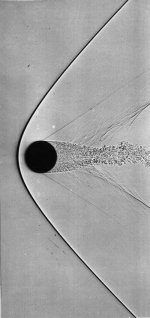Joe Woosman
Member
Boyd,
Here are pictures of a sphere and a pointed bullet at supersonic speed. Do you believe wind blows on the surface of a supersonic projectile like your tin can?
Regarding others theories in past discussions, how could a correct theory not be accurate to describe the wind effect on both of these projectiles? By the pictures it should be obvious the same forces apply.
Here are pictures of a sphere and a pointed bullet at supersonic speed. Do you believe wind blows on the surface of a supersonic projectile like your tin can?
Regarding others theories in past discussions, how could a correct theory not be accurate to describe the wind effect on both of these projectiles? By the pictures it should be obvious the same forces apply.



